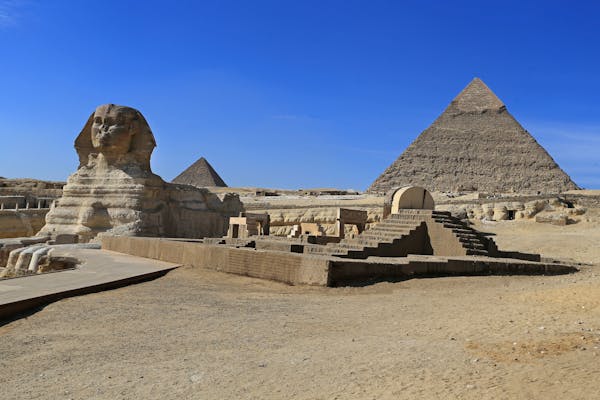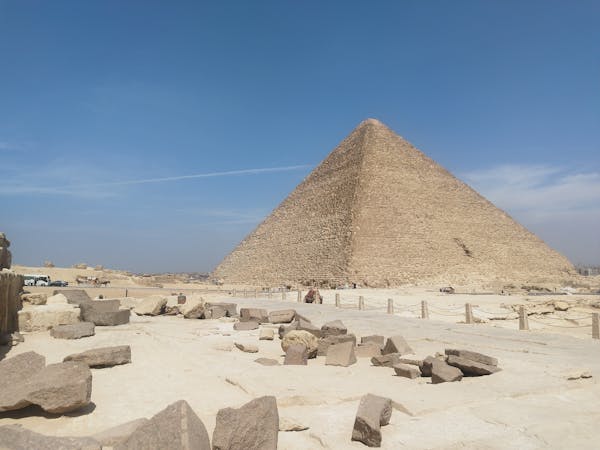The Majestic Sphinx and the Great Pyramid of Giza: Unraveling the Mysteries of Ancient Egypt

The Great Pyramid of Giza and the Sphinx are two of the most iconic and awe-inspiring monuments of ancient Egypt, embodying the grandeur and mystery of a civilization that flourished over 4,500 years ago. Standing proudly in the Giza Plateau, these remarkable structures continue to captivate the imagination of millions, drawing visitors from all over the world. Together, they serve as a testament to the ingenuity, engineering prowess, and spiritual beliefs of the ancient Egyptians, whose legacy has endured through the centuries.

The Great Pyramid of Giza, also known as the Pyramid of Khufu or Cheops, is the largest of the three pyramids in Giza. Originally standing at 481 feet, it was the tallest man-made structure in the world for over 3,800 years. Built as a tomb for the Pharaoh Khufu, the pyramid was constructed with millions of limestone blocks, some weighing as much as 2.5 tons. The precision with which the blocks were cut and arranged is a marvel of ancient engineering, and the sheer scale of the pyramid remains awe-inspiring to this day. The pyramid’s alignment with the stars and its mathematical and astronomical significance further highlights the advanced knowledge possessed by the ancient Egyptians.

Standing guard near the Great Pyramid is the Sphinx, a colossal limestone statue with the body of a lion and the head of a pharaoh, believed to represent Khafre, the ruler of Egypt during the Fourth Dynasty. The Sphinx is an enigmatic symbol of strength and wisdom, and it has long been the subject of fascination and speculation. The statue measures 66 feet in height and 240 feet in length, making it the largest monolithic statue in the world. Its purpose, however, remains a mystery. While many believe it was constructed as a guardian of the pyramids, others suggest it may have had symbolic or ritualistic significance, possibly representing the Pharaoh’s divine power.
The Sphinx, like the Great Pyramid, has withstood the test of time, despite the ravages of weathering, erosion, and human intervention. Over the centuries, the Sphinx has faced neglect, restoration efforts, and even damage from sandstorms, but it continues to stand as a proud reminder of the ancient Egyptian civilization. The face of the Sphinx, which once bore the features of the Pharaoh Khafre, has been worn down by the elements, but it still holds a sense of mystery and awe.

Both the Great Pyramid and the Sphinx have inspired countless theories regarding their construction, purpose, and meaning. Some researchers believe that the pyramids were built as part of an elaborate funerary complex, while others have suggested that they were created to serve as astronomical observatories, aligning with the stars to guide the Pharaoh’s soul in the afterlife. The exact methods used to build the pyramids and the purpose of the Sphinx are still debated by scholars, and the mysteries surrounding these ancient monuments continue to provoke curiosity and intrigue.
Today, the Great Pyramid of Giza and the Sphinx stand as enduring symbols of Egypt’s ancient heritage, drawing visitors from all over the world who seek to experience the grandeur and mystery of these incredible monuments. They are a testament to the creativity, skill, and spiritual depth of the ancient Egyptians, and they remind us of the incredible achievements of a civilization that flourished long before our time. The enduring presence of these monuments continues to evoke wonder and admiration, ensuring that their mysteries will remain a source of fascination for generations to come.